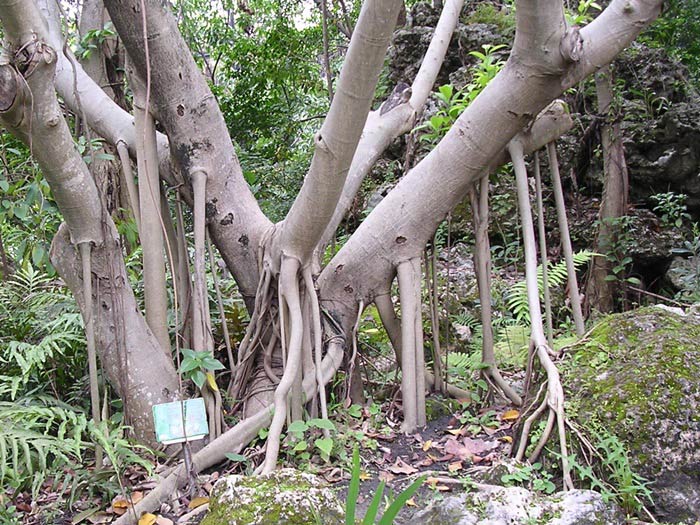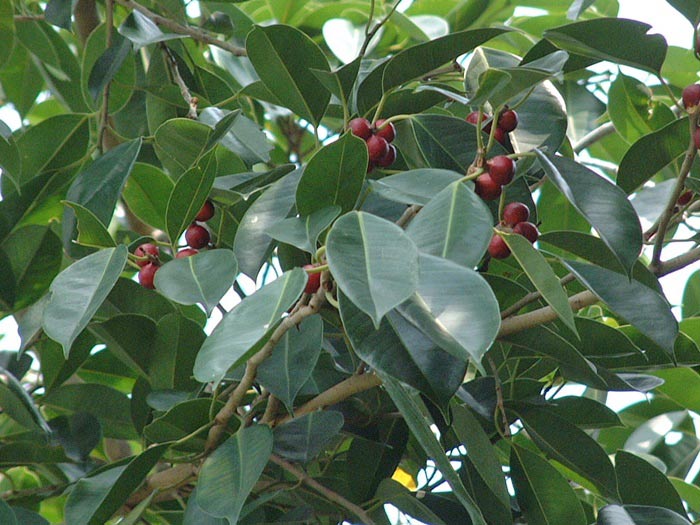Ficus benjamina
The white bark fig is a large evergreen tree distributed in tropical and subtropical regions of South and Southeast Asia, including India, southern China, Myanmar, Thailand, Malaysia, and the Philippines, as well as parts of Oceania and northern Australia. In Taiwan, it is mainly found in warm areas such as the Hengchun Peninsula, Orchid Island and Green Island.
The Chinese name means “white-colored banyan tree” because its most distinctive feature is the smooth, pale grayish-white bark. The bark has a soft and flexible texture, making it a highly promising material for bark cloth craftsmanship.
This plant can grow up to 20 meters tall. Aerial roots often grow downward and hang from its branches, absorbing moisture from the air. When these aerial roots reach the ground, they grow into the soil to absorb water and nutrients, gradually thickening and transforming into prop roots, some of which become as robust as trunks. As the branches extend outward, more prop roots develop, and over time, the tree continually expands, creating the spectacular sight of “a single tree forming a forest.” The famous scene of a forest formed by a single tree in the film “Life of Pi” was filmed under an ancient white bark fig in Gangkou, Pingtung in Taiwan.
The well-developed branches of the white bark fig provide an ideal habitat for epiphytic plants such as orchids. In the wild, Taiwan’s native white-flowered moth orchid (Phalaenopsis aphrodite subsp. formosana) is often found growing on these trees. In the Botanical Garden, orchids including the Taiwan white-flowered moth orchid are cultivated on the white bark fig trees located in the Coral Atoll Area and Monsoon Rain Forest Area. Many ferns also naturally attach themselves to these large trees, together forming a unique ecological landscape known as a “tree apartment.”
Among the indigenous peoples in Taiwan, Paiwan people in Mudan, Pingtung use the prop roots of the white bark fig as pillars for their houses. After processing, the bark fibers can be made into ropes, bowstrings, and even bark cloth garments. The Tao people on Orchid Island use the flexible prop roots as material for making the rudders of their traditional fishing boats.

